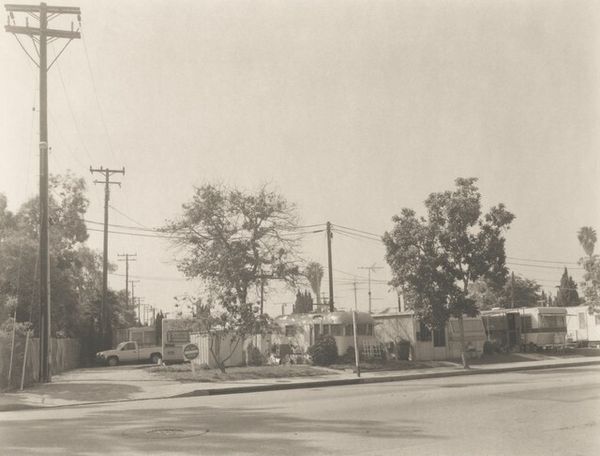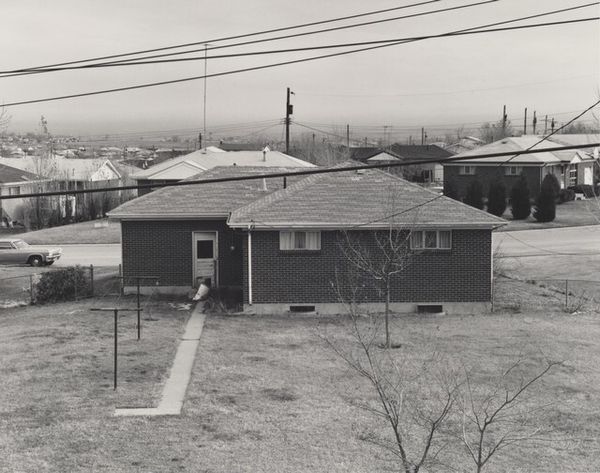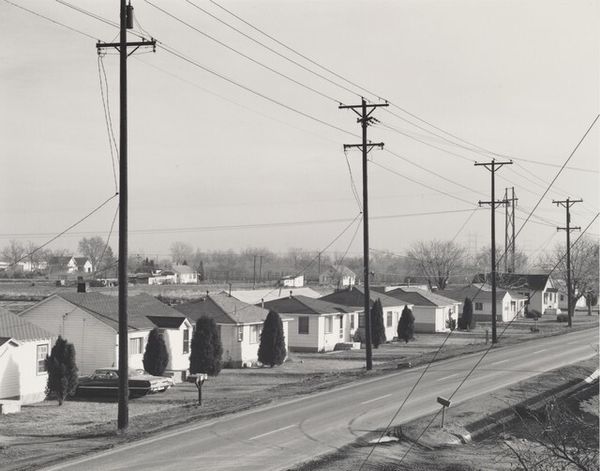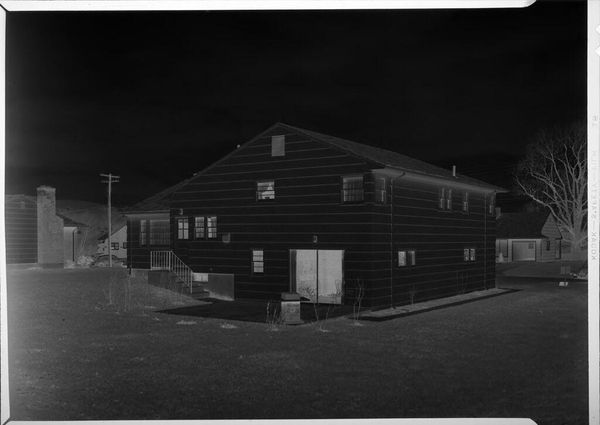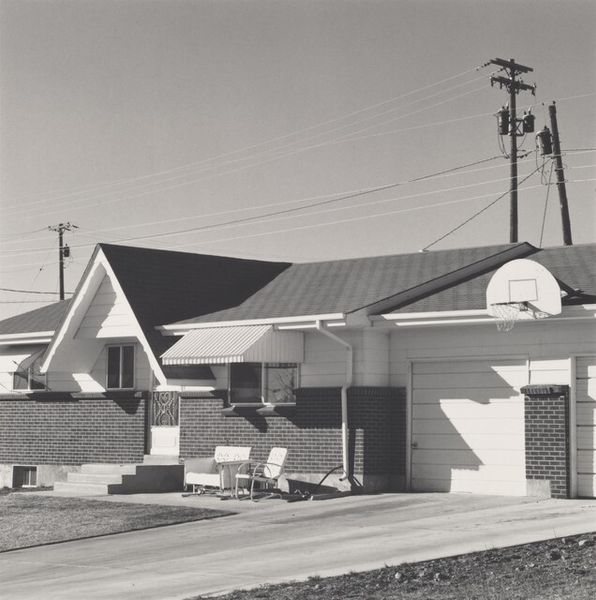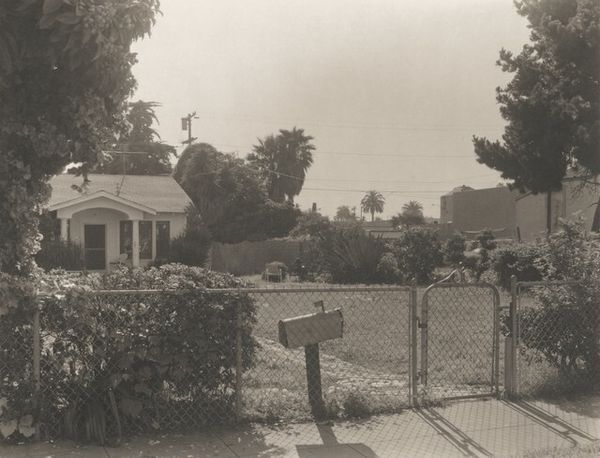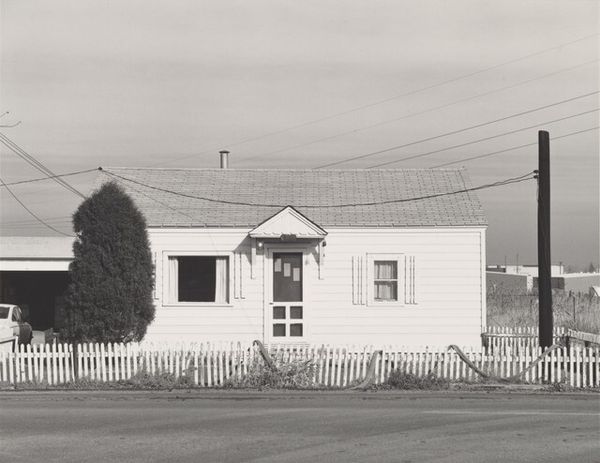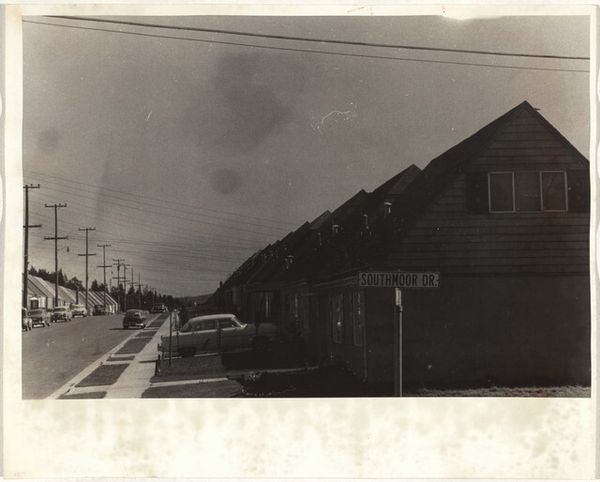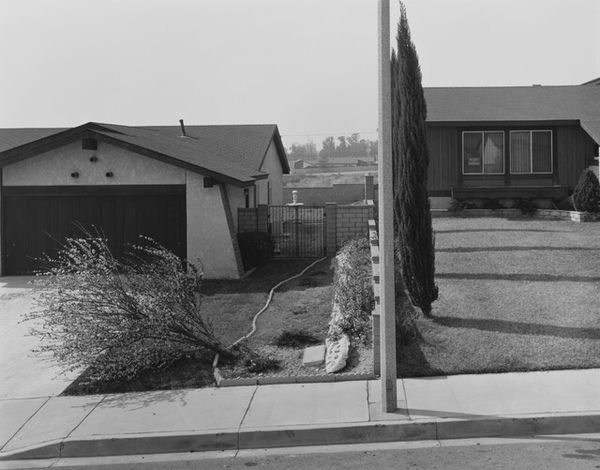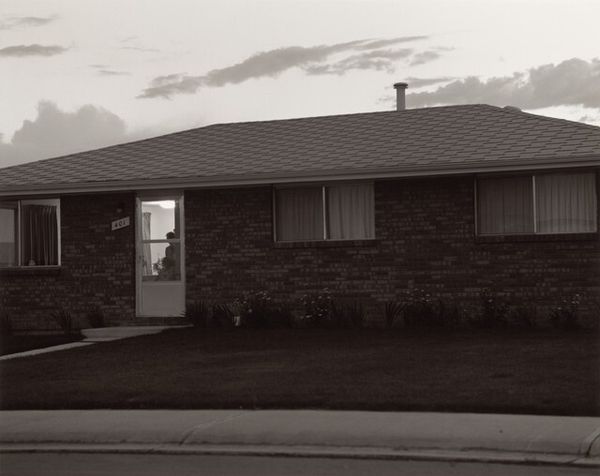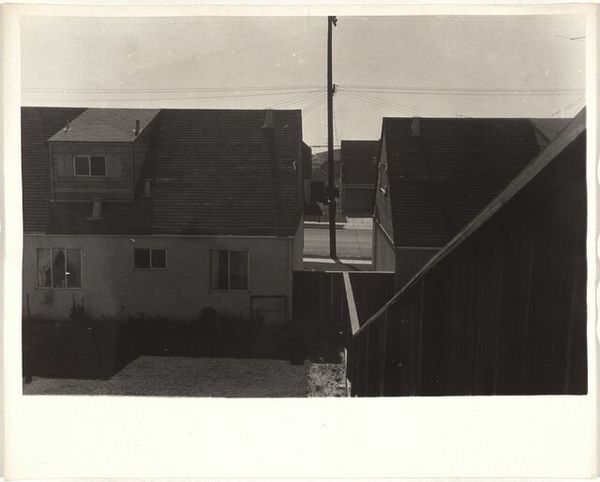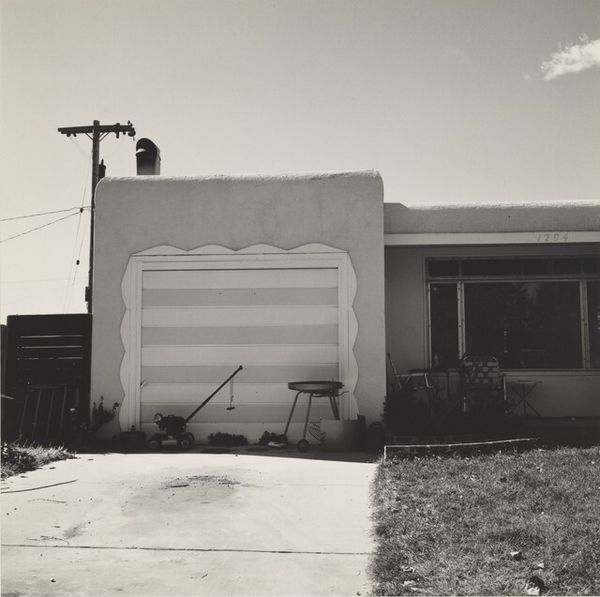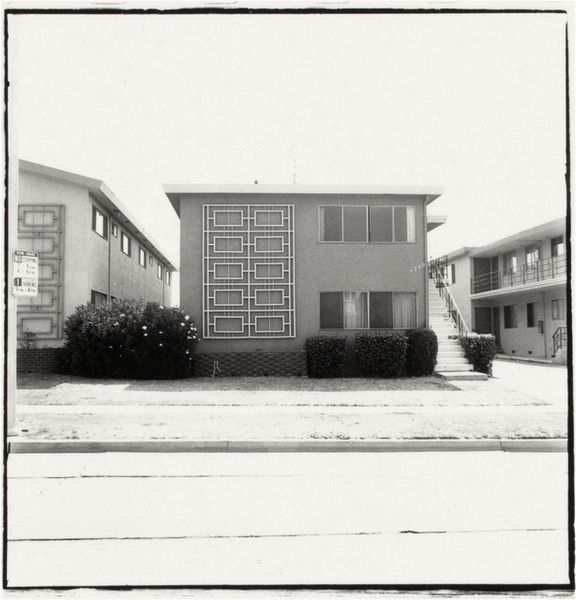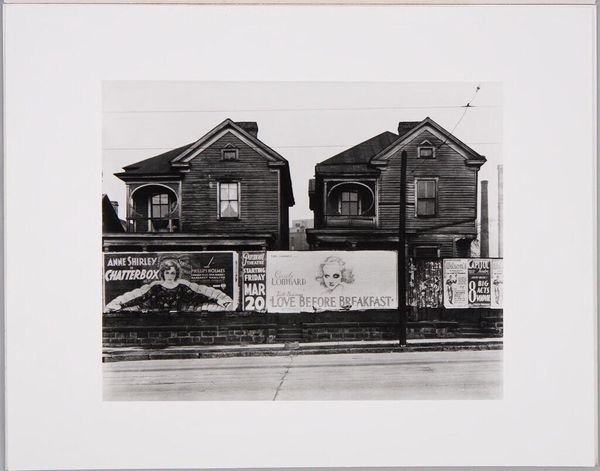
photography
#
black and white photography
#
landscape
#
street-photography
#
photography
#
monochrome photography
#
monochrome
#
realism
#
monochrome
Dimensions: image: 15.1 × 19.2 cm (5 15/16 × 7 9/16 in.) sheet: 27.9 × 35.4 cm (11 × 13 15/16 in.)
Copyright: National Gallery of Art: CC0 1.0
Editor: This is Robert Adams's "Longmont, Colorado," likely taken sometime between 1973 and 1988. It’s a black and white photograph. It feels quiet, almost melancholic. The houses seem so similar, silhouetted against the darkening sky. What catches your eye in this piece? Curator: The consistency, as you observed, Editor, is critical, isn’t it? The homes are clearly of one era, one architectural mindset, echoing each other down the street. The image serves as a potent signifier. Editor: Signifier of what, exactly? Curator: Consider the electric lines overhead. Think of what they signify about connectivity and societal infrastructure. This relates to power, both literal electrical power, and the broader systems governing these planned communities. The dark sky weighs heavily on the scene. Is this sense of oppression reflected elsewhere, and if so, where? Editor: You can see it in the conformity of the houses themselves – the visual echoes that you noted. The only differentiation comes from the minimal landscaping and the faint glow from a few windows. I wonder about the people inside those homes, each with a single light on. Curator: Indeed! Are those points of light symbols of hope, isolation, or simply domesticity? The photographic process, too, is symbolic. Adams chose black and white, which removes the distraction of color, leading to a focused investigation on form, light, and shadow to provoke the cultural memory of the monochrome images which predominated mid-century media. How does this then relate to today's continuous visual imagery and constant light? Editor: That gives me a lot to think about. It's fascinating to see how seemingly simple images hold such a depth of meaning. Curator: Precisely! And by exploring these visual symbols, we uncover layers of cultural history, psychological weight, and the continuity of human experience across time.
Comments
No comments
Be the first to comment and join the conversation on the ultimate creative platform.
